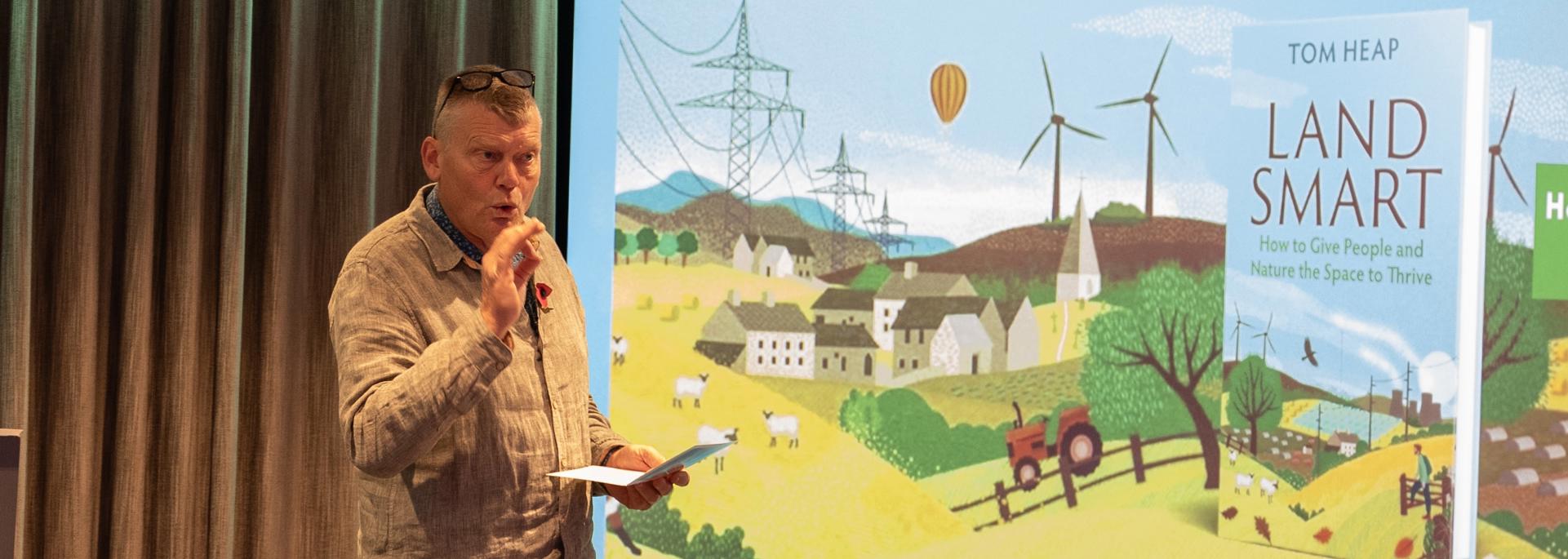
Giving People & Nature the Space to Thrive
Mon 16 Jun 2025
Our land has so many demands on it, not just food, forestry and housing but now carbon storage, energy generation, room for Nature, flood water storage, biomaterials, transport and recreation. There is a race for space on earth and most of these land uses pay better than farming. In an era of ‘nature based solutions’ to our environmental pressures at a time of continuing population growth, do we have room for everything?
I think the answer is ‘yes’ but only just, and only if we use land smartly. People who are doing just that fill the pages of my book ‘Land Smart’.
We don’t (yet) face a global food crisis but we do face crises of dwindling nature and rocketing climate change. Food production shoulders a big slice of the blame. Taking more wilderness - forest,
savannah, wetlands - under the plough or cow is the single biggest driver of extinction. The same activity also releases billions of tonnes of carbon.
What we consume in the UK has a land-use footprint, not just here but around the world. In fact, our imported food uses a slightly greater area of land than the size of the UK. There is no environmental honesty in creating a nature friendly nirvana here if we push our food demands on the rest of the world. So, we must respect good yields yet deliver them with fewer chemical inputs and still boost wildlife.
Seeing these multiple challenges through the lens of land use is what underpins the Government’s recently launched ‘Land Use Framework’ consultation. Whether this turns out to be truly transformative or just an interesting thought experiment depends on the political weight and money behind it. In short does it have the backing from Government, or will they see any environmental action and regulation as blasphemous to the one God of GDP growth?
If the Government is serious, here are a few guiding thoughts from me and my book. Whenever possible, encourage multifunctional land: arable crops that store carbon in the soil, housing developments that are great for nature, mega-warehouses with solar panels on top, forest planting that encourages nature. Back scientific research into boosting the productivity of regen agriculture. Grant planning permission to onshore wind turbines. Encourage the continued diversification of land use in the uplands away from simply grazing. Where legally possible, take subsidy and policy away from backing biofuels; they are a terrible way of getting energy from sunlight. Be brave about diet as our food choices are written in the land. We eat too much, waste too much and
enjoy too much meat. Don’t tell us what to eat but do talk about the consequences.
And while I’m on the subject of hot potatoes, don’t assume we can do all the above while continuing the race to the bottom on food prices. If you do, we won’t grow it.
Thank you to Tom Heap, Author & Journalist, for guest-authoring this article as part of our 2025 Innovate magazine. To read more articles from Innovate, or to find out more about Tom's latest book Land Smart, visit the links below.

Keep updated
Keep up-to-date with our latest news and updates. Sign up below and we'll add you to our mailing list.
 Brown&Co
Brown&Co
